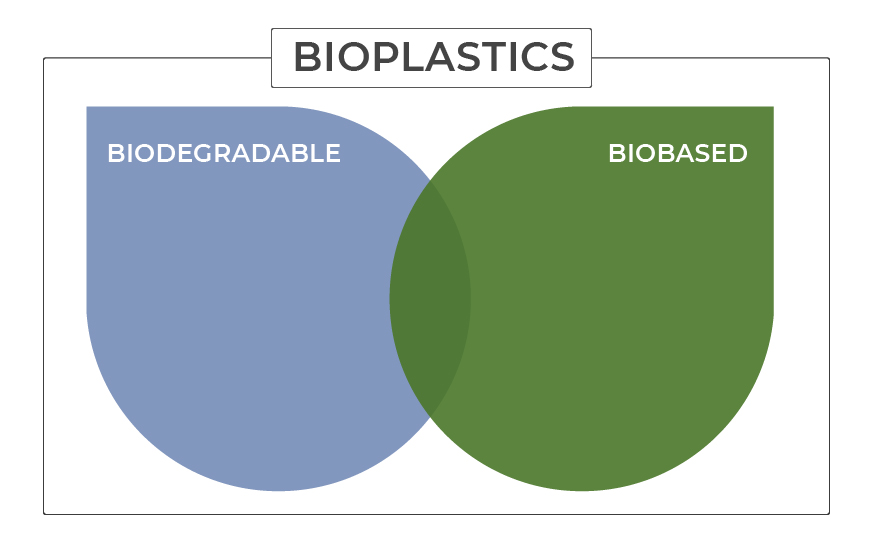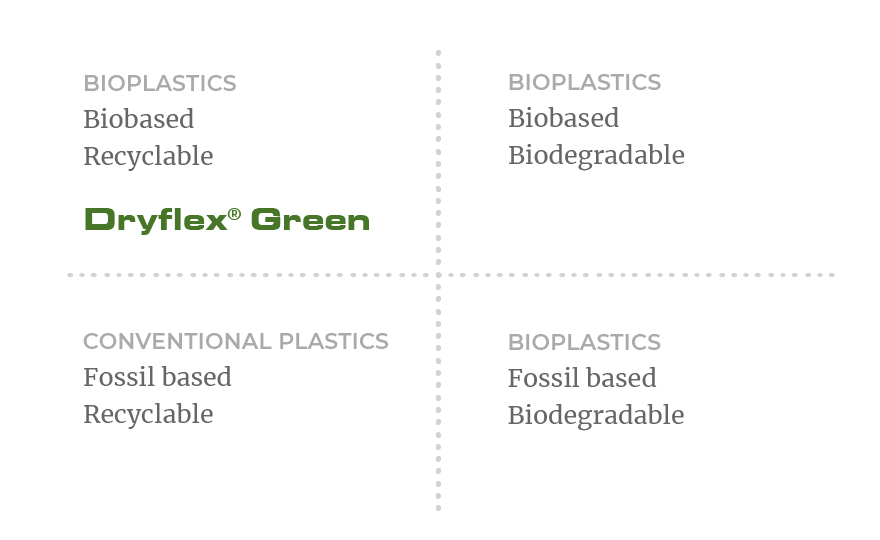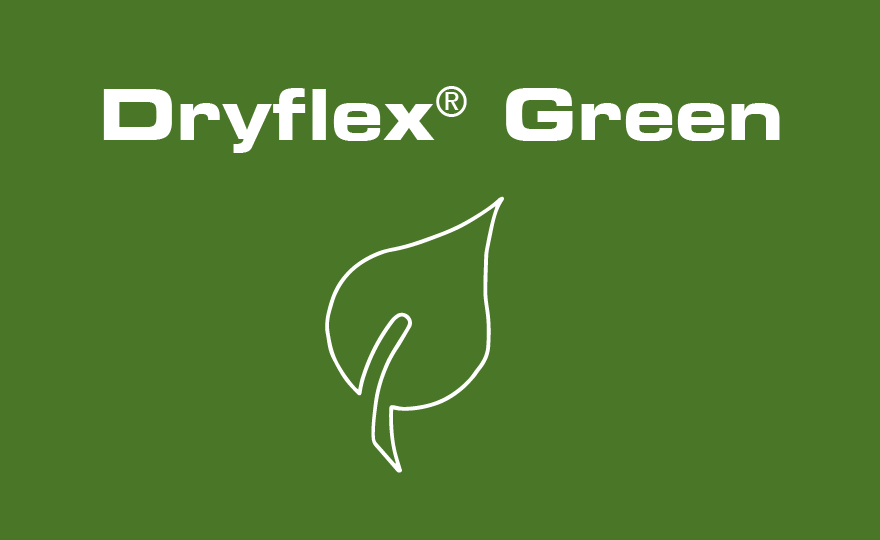What are Bioplastics?
The term bioplastics describes an evolving and increasingly sophisticated family of materials. Bioplastics can be biobased, biodegradable or both.

What are Biobased Plastics?
Biobased refers to where the material comes from, it can be partially or fully biobased. Conventional plastics are fossil-based, meaning they use non-renewable resources from the earth. Biobased plastics come from renewable biomass, meaning plants. Some common plants that are used to make bioplastics are sugarcane, cassava and corn.
Not all biobased plastics are biodegradable, although some are biodegradable as well. Biobased only refers to what was used to make the material. It doesn’t imply anything about what happens to it at the end of its life.
What are Biodegradable Plastics?
Biodegradable simply means that the material can go through a chemical process where microorganisms in the environment convert the material back into natural substances like carbon dioxide, biomass and water. In the case of biodegradable plastics, the conditions of the environment usually have to be quite specific for it to happen effectively.
Not all biodegradable plastics are biobased, some are fossil based.


Dryflex Green TPEs
The Dryflex Green range of materials are biobased in varying levels, we state the biobased content for each material in the range according to the ASTM D866-12 standard. The materials aren’t biodegradable which suits the applications Dryflex Green is used for, as the end products tend to have a long shelf-life. Once products made from Dryflex Green reach the end of their useful life, they are recyclable in closed-loop systems as they’re thermoplastic elastomers (TPE). This means that they can be reground, melted and processed again and again into new products.

